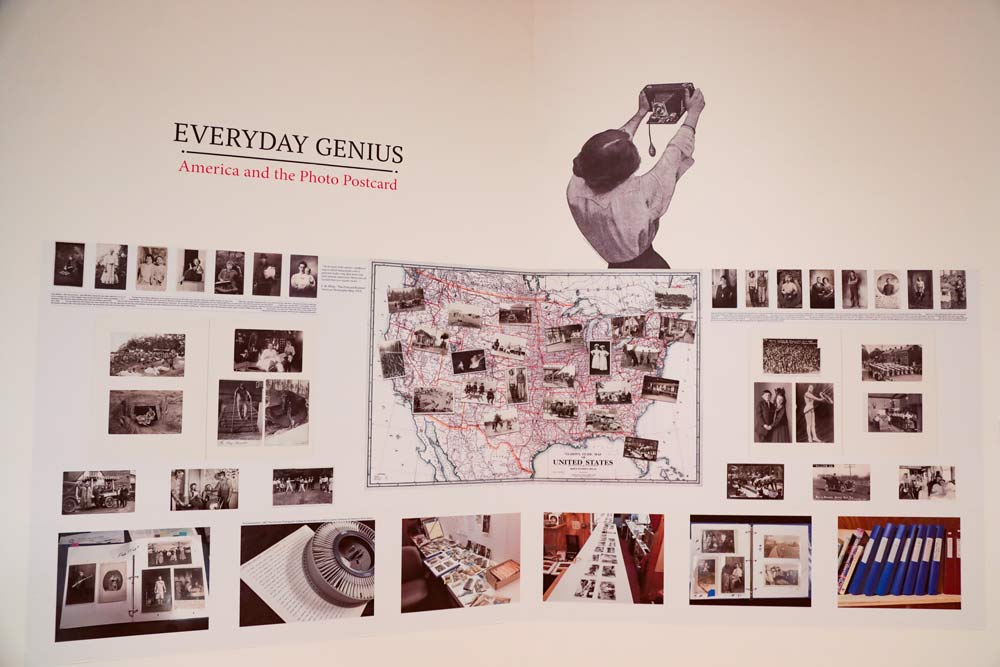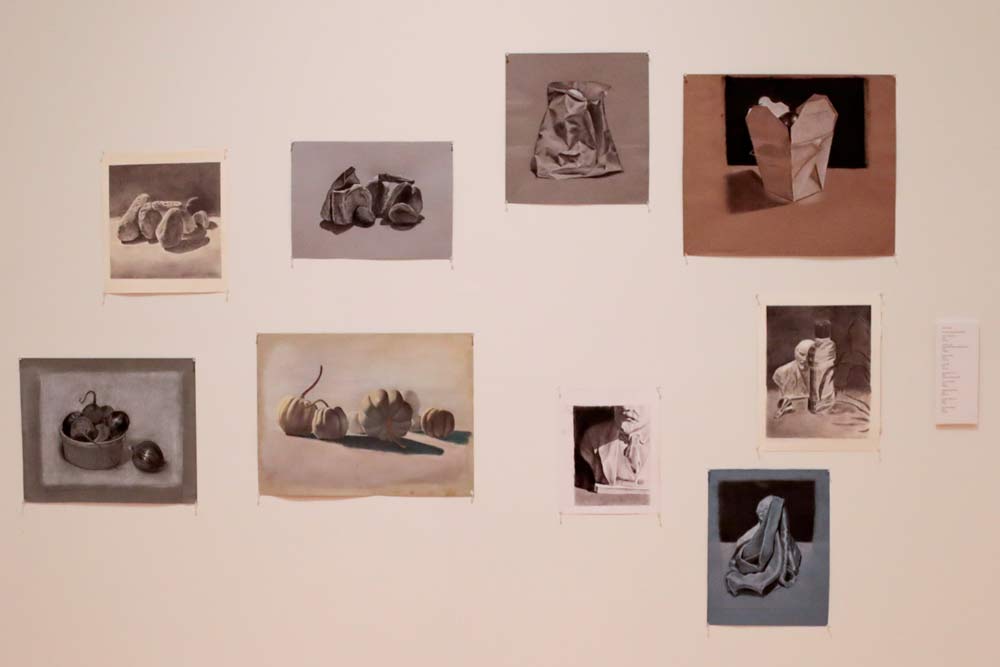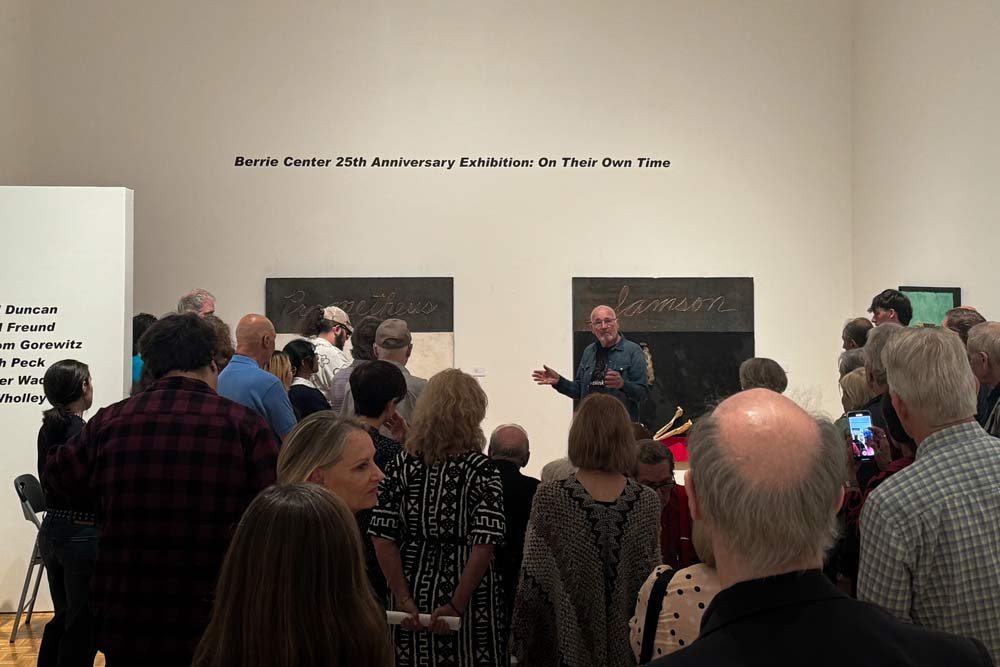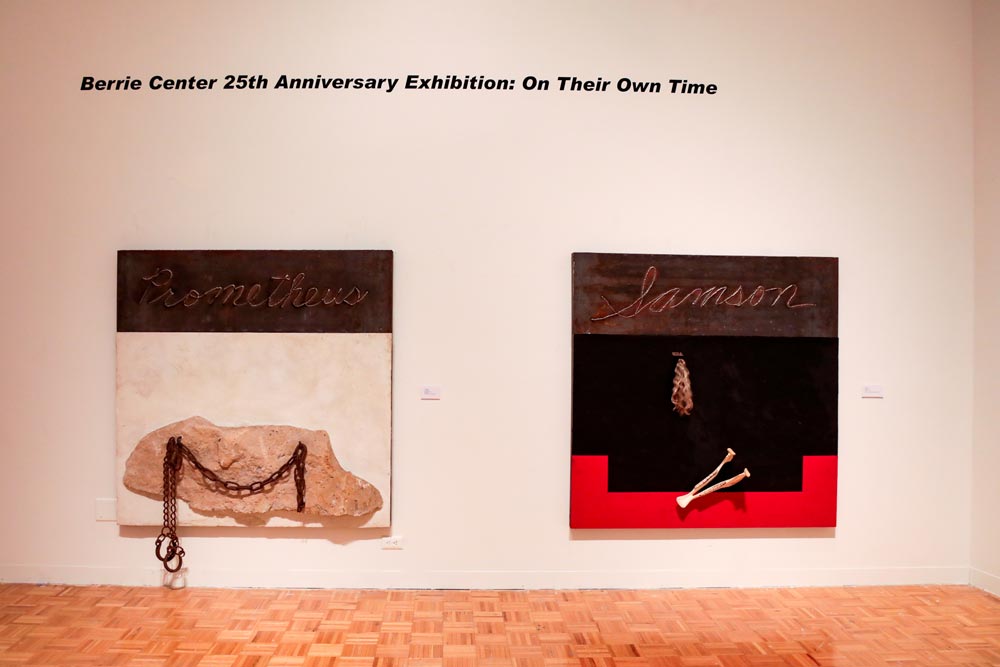#HomeSweetPo
A Look Back:
Ramapo College’s Tribute to Retired Visual Arts Faculty
By Mark Gregorio | Spring 2025
When the Angelica and Russ Berrie Center for Performing and Visual Arts at Ramapo College turned 25, the campus community didn’t just celebrate; it also reflected. The milestone anniversary was commemorated with “On Their Own Time,” an exceptional exhibition that honored the artistic legacies of six former visual arts faculty members. From September 18 to November 15, the Kresge Gallery, located in the Berrie Center, thrived with the creativity of professors who had dedicated years to shaping students and enhancing Ramapo’s artistic reputation.
At the core of it all was Dr. Carol Duncan, professor emeritus and a groundbreaking scholar in museum studies. Although her work has significantly impacted contemporary art discourse, this exhibition marked the first gallery display of her drawings. “Seeing her drawings in person was extraordinary,” said Sydney Jenkins, director of the Ramapo galleries. “It felt like getting a glimpse into the personal side of someone whose academic work has been so influential.”
Professor Emeritus David Freund’s “Everyday Genius: America and the Photo Postcard” showcased a nostalgic collection of vintage postcards, capturing American history and the charm of mailed memories.
Alongside her were longtime colleagues and renowned artists: David Freund; Shalom Gorewitz; Dr. Judith Peck; Warner Wada; and Jay Wholley. Each had a distinct artistic voice and an enduring impact on Ramapo’s creative community.
“This show was a way to celebrate both our former faculty and the Berrie Center’s role in the arts over the past 25 years,” said Jenkins. “These professors may have retired, but their artistic journeys are far from over.”
Art, Influence and Lasting Legacies
Duncan, recognized for her groundbreaking work, “Civilizing Rituals: Inside Public Art Museums,” and as one of the pioneers of a new socio-political approach to art history and criticism called the “new art history,” has explored how museums shape cultural narratives. However, few people were aware that she was also an artist. This exhibition changed that.
“I enjoyed the experience from start to finish. It was an honor for me to be included in a show featuring work by my former studio colleagues,” she said. “The opening was a reunion of faculty from across the college, people I had known and worked with for decades.”
Ramapo College’s first public exhibition of Professor Emeritus Carol Duncan’s drawings and sculptures offered a rare glimpse into the personal side of her influential career in museum studies.
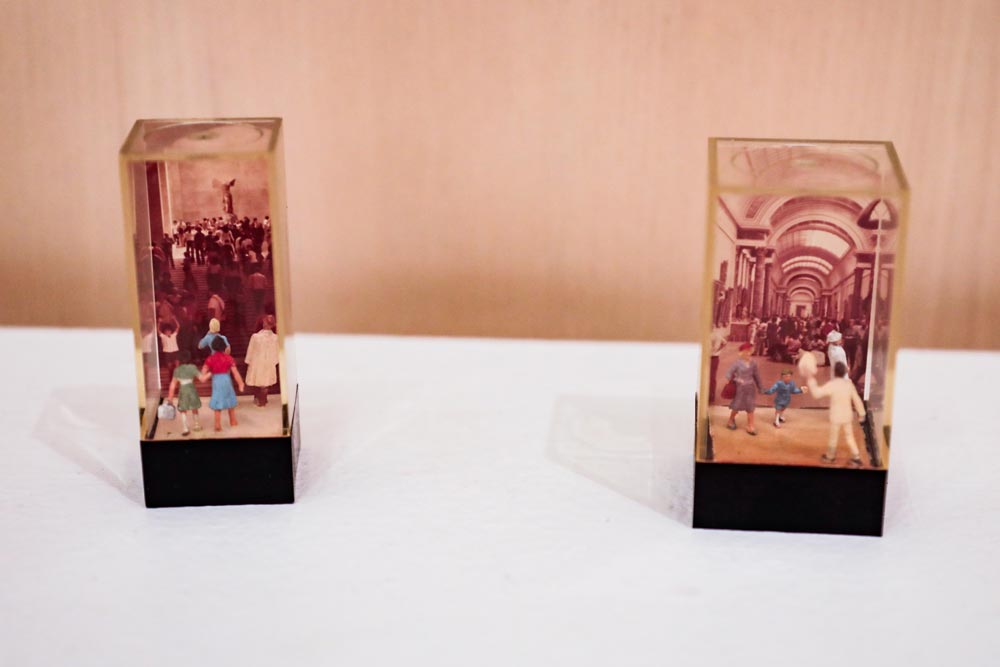
Duncan reflected that having her work, including the sculptures above, exhibited alongside her former studio colleagues was “an honor.”
Shalom Gorewitz, a retired professor of visual arts and a pioneering figure in video art, presented a collection of video art that pushed the boundaries of digital storytelling. “He has always been at the forefront of experimental media,” Jenkins remarked. “His work provokes thought and challenges your perception of video as an art form.”
Judith Peck, professor emeritus of art, brought a powerful sculptural presence to the show. Her small figures—cast in bronze, stone, wood and mixed media—have appeared everywhere, from Yale Art Gallery to the United Nations. Each piece reflected her deep exploration of the human form and social themes.
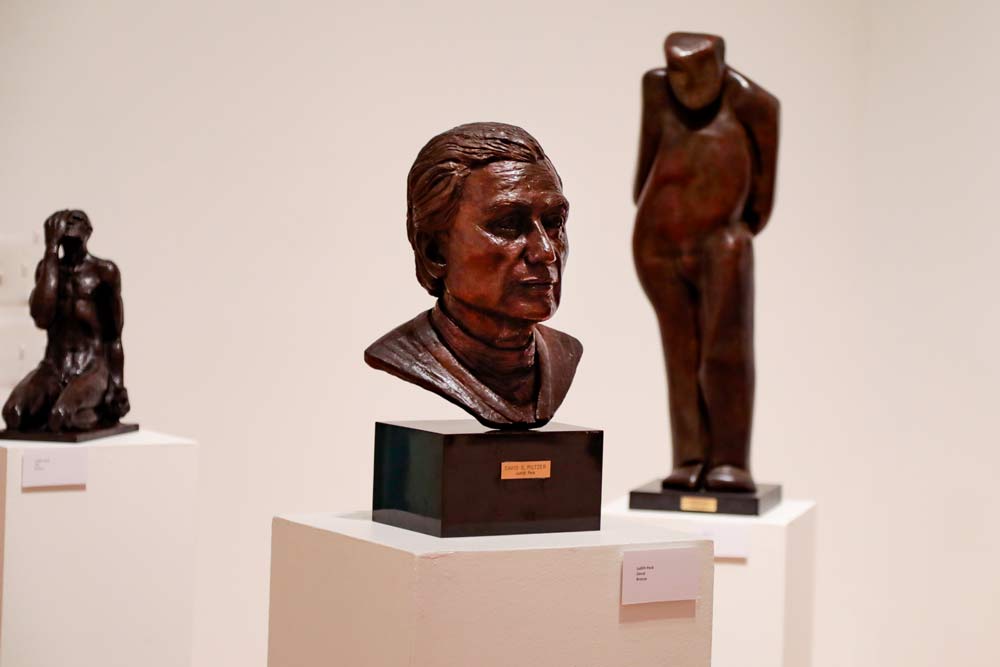
Judith Peck’s sculptural works, spanning bronze, stone and wood, explored the human form and social themes and have been showcased in major art venues worldwide.
Warner Wada, professor emeritus of fine arts, selected his work around the theme of sustainability. One particularly striking piece in the exhibition featured horseshoe crabs. His art underscored Ramapo’s commitment to interdisciplinary education and environmental awareness.
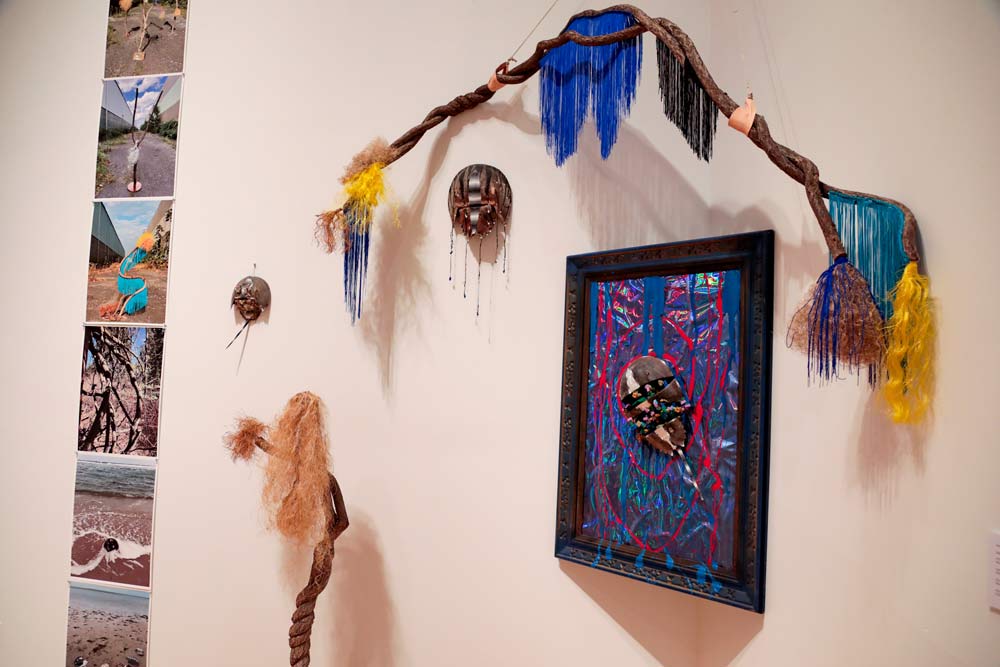
Professor Emeritus Warner Wada’s sustainability-themed art, featuring horseshoe crabs, reflected Ramapo’s focus on education and environmental awareness.
Jay Wholley, a founding faculty member, former chair of the Faculty Assembly and professor emeritus of art, showcased his distinctive 2D metal wall pieces. His works typically involve cutting, shaping and sometimes layering metal to create visually striking, often abstract compositions. Throughout his 44-year career, including over 20 years as the convener of the visual arts group, his work was featured in the Whitney Biennial, the Detroit Institute of Art, the Trenton Museum and the Aspen Museum of Art.
A Show That Brought the Community Together
Excitement for the exhibition was evident from day one. The opening reception drew a crowd of alumni, faculty and art lovers eager to reconnect with the work of their former professors.
“The response was overwhelming,” Jenkins said. “At one point, we hit gallery capacity and had to turn visitors away. It shows how much these artists mean to the community.”
For some, the exhibition was a trip down memory lane; for others, it introduced them to artists they had only known as educators. Either way, the impact was clear. “We wanted people to walk away with a deeper appreciation for these professors—not just as teachers but as working artists,” Jenkins said.
“On Their Own Time” left behind more than just a memory. It was a testament to the lasting influence of Ramapo’s faculty, their artistic evolution and the creative community they helped build.
While the show may be over, the stories these artists tell through their work continue—on their own time.

